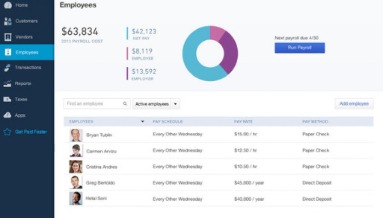
Learners are advised to conduct additional research to ensure that courses and other credentials pursued meet their personal, professional, and financial goals. Adam Hayes, Ph.D., CFA, is a financial writer with 15+ years Wall Street experience as a derivatives trader. Besides his extensive derivative trading expertise, Adam is an expert in economics and behavioral finance. Adam received his master’s in economics from The New School for Social Research and his Ph.D. from the University of Wisconsin-Madison in sociology.
- When Lucie purchases the shelving, the Equipment sub-ledger would only show half of the entry, which is the debit to Equipment for $5,000.
- Once one understands the DEAD rule, it is easy to know that any other accounts would be treated in the exact opposite manner from the accounts subject to the DEAD rule.
- The DEAD rule is a simple mnemonic that helps us easily remember that we should always Debit Expenses, Assets, and Dividend accounts, respectively.
- Because the double-entry system is more complete and transparent, anyone considering giving your business money will be a lot more likely to do so if you use this system.
- The double entry accounting system is a method for companies of all sizes to accurately record the impact of transactions and keep close track of the movement of cash.
When you deposit $15,000 into your checking account, your cash increases by $15,000, and your equity increases by $15,000. When you receive the money, your cash increases balance sheet vs income statement difference and comparison by $9,500, and your loan liability increases by $9,500. Formally, the summarized list of all ledger accounts belonging to a company is called the “chart of accounts”.

Accounting equation approach
This best practices for writing nonprofit bylaws is because her technology expense assets are now worth $1000 more and she has $1000 less in cash. The balance sheet is based on the double-entry accounting system where the total assets of a company are equal to the total liabilities and shareholder equity. On the income statement, debits increase the balances in expense and loss accounts, while credits decrease their balances. Debits decrease revenue account balances, while credits increase their balances. In the double-entry accounting system, transactions are recorded in terms of debits and credits.
Debits and credits
Since a debit in one account offsets a credit in another, the sum of all debits must equal the sum of all credits. The debits and credits are tracked in a general ledger, otherwise referred debt service coverage ratio to as the “T-account”, which reduces the chance of errors when tracking transactions. Very simply, the double-entry system states that at least two entries must be made for each business transaction, one a debit entry and another a credit entry, both of equal amounts. Under the double-entry system of accounting, each business transaction affects at least two accounts. One of these accounts must be debited and the other credited, both with equal amounts. Yes, the Generally Accepted Accounting Principles (GAAP) requires that businesses use double-entry bookkeeping in recording financial transactions.
Scenario 4: $1,000,000 Equity Issuance for Cash
Some types of mistakes will cause the system to be out of balance; as a result, the bookkeeper will be alerted to a problem. The inventor of double-entry bookkeeping is not known with certainty, and is frequently attributed to either Amatino Manucci, a Florentine merchant, or Luca Pacioli, a Venetian friar. This article compares single and double-entry bookkeeping and explains the pros and cons of both systems. A second popular mnemonic is DEA-LER, where DEA represents Dividend, Expenses, Assets for Debit increases, and Liabilities, Equity, Revenue for Credit increases. However, as can be seen from the examples of daybooks shown below, it is still necessary to check, within each daybook, that the postings from the daybook balance.
The asset account “Equipment” increases by $1,000 (the cost of the new equipment), while the liability account “Accounts Payable” decreases by $1,000 (the amount owed to the supplier). You enter a debit (DR) of $1000 on the right-hand side of the “Equipment” account. To balance the accounts, you enter a credit (CR) of $1000 in the “Accounts Payable” account.
Double-entry accounting is the standardized method of recording every financial transaction in two different accounts. For each credit entered into a ledger there must also be a corresponding (and equal) debit. In the fourth and final scenario, the company decides to raise capital by issuing equity in exchange for cash. The company was able to raise $1 million in cash, reflecting an “inflow” of cash and therefore a positive adjustment. The cash account is debited by $1 million, whereas the offsetting entry is a $1 million credit to the common stock account. Since every transaction affects at least two accounts, we must make two entries for each transaction to fully record its impact on the books.
Regardless of which accounts and how many are involved by a given transaction, the fundamental accounting equation of assets equal liabilities plus equity will hold. This is a partial check that each and every transaction has been correctly recorded. The transaction is recorded as a “debit entry” (Dr) in one account, and a “credit entry” (Cr) in a second account. The debit entry will be recorded on the debit side (left-hand side) of a general ledger account, and the credit entry will be recorded on the credit side (right-hand side) of a general ledger account. If the total of the entries on the debit side of one account is greater than the total on the credit side of the same nominal account, that account is said to have a debit balance. The likelihood of administrative errors increases when a company expands, and its business transactions become increasingly complex.


Leave A Comment